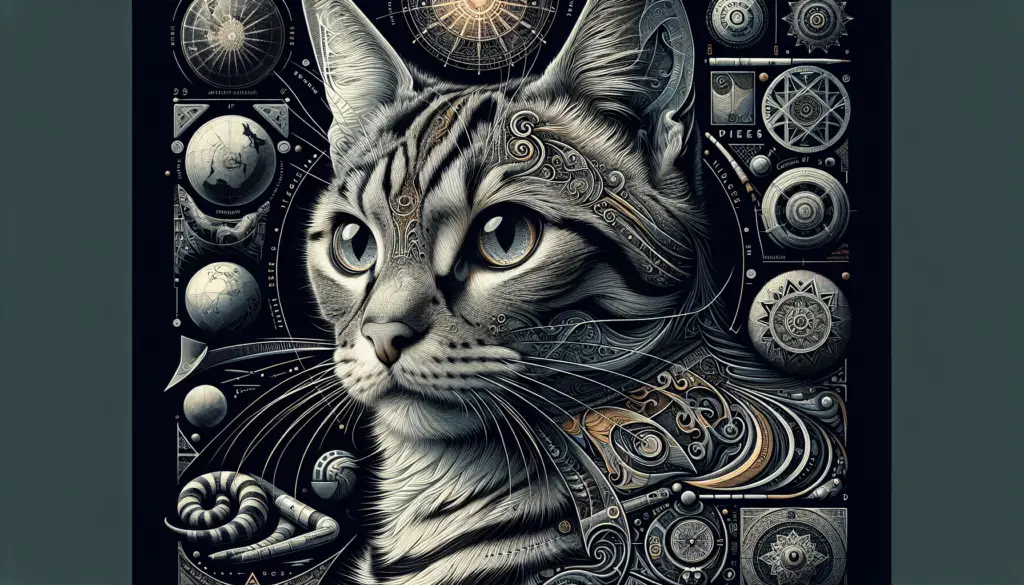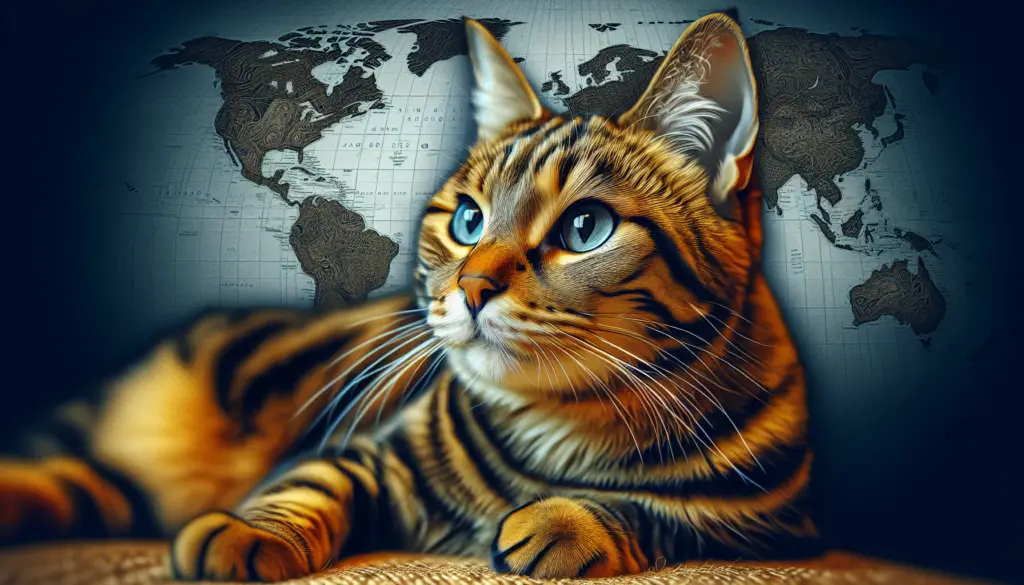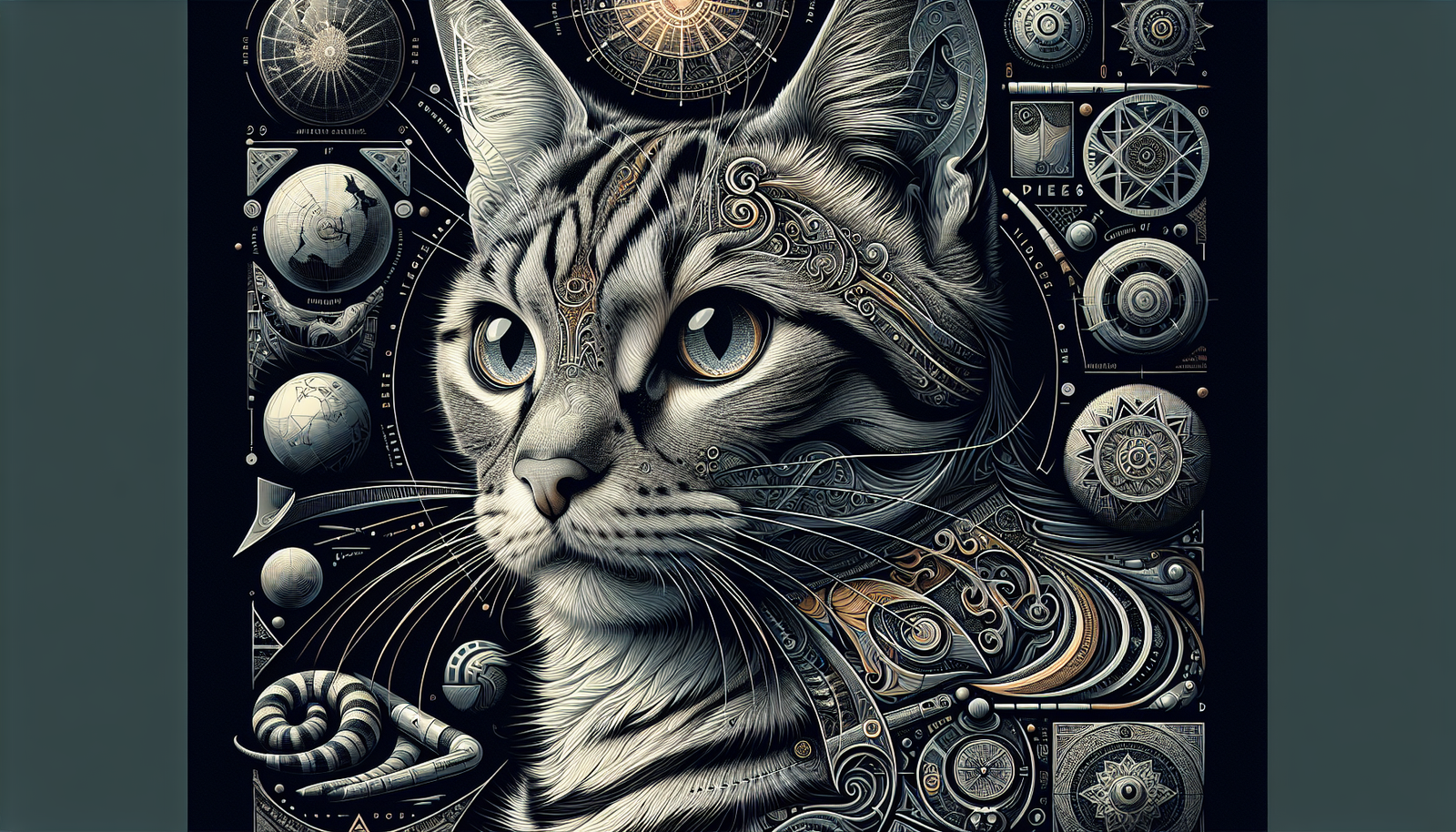Have you ever wondered what exactly classifies a cat as a tabby cat? Well, look no further, because in this article, we will help you understand the definition of a tabby cat. From their distinctive coat patterns and colors to their unique personality traits, we will explore what makes tabby cats so special and beloved by cat enthusiasts around the world. Whether you are a cat lover yourself or simply curious about these adorable feline friends, get ready to learn all about the wonderful world of tabby cats.

The Basics of Tabby Cats
What is a tabby cat?
A tabby cat refers to a specific coat pattern rather than a breed. They are domestic cats with distinct markings on their fur. Tabby cats are incredibly common, making up around 80% of the cat population.
Origin of the term ‘tabby’
The term ‘tabby’ originates from the early 17th century and was derived from the word ‘atabi,’ meaning a type of silk fabric with a watered appearance. This term was used to describe the striped pattern found on the backs of cats, similar to the appearance of the silk fabric.
Characteristics of a tabby cat
Tabby cats display a unique set of characteristics that make them easily recognizable. They have an ‘M’ mark on their forehead, a dark line running from the inner corner of their eyes, and stripes that usually follow along their bodies. Additionally, tabbies often have a pattern on their forehead resembling the shape of a butterfly.
Tabby Cat Coat Patterns
Classic tabby
The classic tabby coat pattern is characterized by bold and swirling patterns on the cat’s sides. These patterns resemble marble or bullseyes and often have a darker line extending from the neck to the tail, known as a ‘spine line.’
Mackerel tabby
Mackerel tabbies have thin, vertical stripes running down their sides, giving them a ‘tiger-like’ appearance. The stripes are evenly spaced and resemble the skeleton of a fish, hence the name ‘mackerel.’
Ticked tabby
Ticked tabbies have a unique coat pattern with no distinct stripes or spots. Instead, their fur appears to be evenly speckled, giving them a subtle and delicate appearance.
Spotted tabby
As the name suggests, spotted tabbies have distinct spots on their coats. The spots can vary in size and shape, ranging from small dots to larger rosettes. This pattern is reminiscent of the coats of wild cats, adding an exotic touch to these tabby cats.
Patched tabby
Patched tabbies, also known as tortoiseshell tabbies, have a combination of tabby patterns and tortoiseshell coloration. Their coats exhibit a mix of solid patches and tabby markings, creating a unique and eye-catching appearance.
Tabby and white
Tabby and white cats have a combination of tabby patterns and white fur. The tabby markings are typically concentrated on the head, tail, and legs, while the rest of the body is covered in white.
Genetics of Tabby Cats
Agouti gene
The agouti gene is responsible for determining the tabby pattern in cats. It controls the distribution and arrangement of pigments in the fur, resulting in the various coat patterns found in tabbies.
Pattern gene
The pattern gene works in conjunction with the agouti gene to determine the specific tabby coat pattern. Different variations of this gene can influence whether a cat will have distinct stripes, spots, or other tabby markings.
Determining the tabby pattern
The agouti and pattern genes interact in complex ways, resulting in the different tabby coat patterns seen in feline companions. The combination of these genes determines whether a tabby cat will have a classic, mackerel, ticked, spotted, or patched pattern.
Sex-linked tabby gene
In addition to the agouti and pattern genes, tabby cats also possess a sex-linked tabby gene. This gene is responsible for determining the coat color, such as brown, grey, orange, silver, blue, cream, red, or black, seen in tabbies.
Tabby Cat Colors
Brown tabby
Brown tabbies have a warm, reddish-brown base color with darker brown or black stripes. They are the most common tabby color and often have a rich, earthy appearance.
Grey tabby
Grey tabbies, also known as blue tabbies, have a bluish-gray base color with darker stripes. This color gives them a cool and regal appearance that is highly sought after by cat enthusiasts.
Orange tabby
Orange tabbies, sometimes referred to as ginger or marmalade tabbies, have a vibrant orange base color with darker orange or brownish stripes. They are known for their warm and friendly personalities, often associated with their bright and cheerful appearance.
Silver tabby
Silver tabbies have a pale silver or white base color with black stripes, creating a striking contrast. The silver coloration adds a touch of elegance and sophistication to these tabbies’ overall appearance.
Blue tabby
Blue tabbies, also known as grey tabbies, share the same base color as grey tabbies. However, their stripes are much lighter, giving them a softer and more delicate look.
Cream tabby
Cream tabbies have a creamy white base color with soft orange or buff-colored stripes. Their coat color is gentle and soothing, adding an element of warmth to their overall appearance.
Red tabby
Red tabbies, often called ginger or orange tabbies, have a deep red or orange base color with darker red or brown stripes. Their vibrant coloration exudes energy and charisma, reflecting their lively personalities.
Black tabby
Black tabbies have a solid black base color with faint tabby markings. In certain light, their stripes become visible, revealing their tabby heritage. The combination of the black color and tabby pattern creates a sleek and mysterious appearance.

Tabby Cat Personalities
Social and friendly nature
Tabby cats are well-known for their social and friendly nature. They thrive on human companionship and are often described as being outgoing and affectionate. They enjoy interacting with their owners and make excellent family pets.
Playfulness and energy
Tabby cats have an abundance of energy and love to engage in play. They are highly active and enjoy toys, puzzles, and interactive games that provide mental and physical stimulation. Their playful nature makes them entertaining companions for both children and adults.
Intelligence and curiosity
Tabby cats are known for their intelligence and curiosity. They are quick learners and can be easily trained to perform tricks or respond to commands. Their inquisitive nature often leads them to explore their surroundings and investigate new objects or environments.
Affectionate and loyal tendencies
Tabby cats are famously affectionate and loyal towards their owners. They form strong bonds and enjoy being close to their human companions. They often display their affection through gentle headbutting, purring, and kneading. Tabby cats have a reputation for being devoted and loving companions.
Special Considerations for Tabby Cat Owners
Grooming needs
Tabby cats have varying grooming needs depending on their coat length. Long-haired tabbies require more frequent brushing to prevent matting and keep their fur in top condition. Short-haired tabbies generally require less grooming but still benefit from occasional brushing to remove loose hair and promote a healthy coat.
Health concerns
Like all cats, tabbies are prone to certain health concerns, including dental issues, obesity, and common feline diseases. Regular veterinary check-ups, a balanced diet, and plenty of exercise can help prevent or manage these health concerns.
Diet and nutrition
Providing your tabby cat with a balanced and nutritious diet is crucial for their overall health and well-being. High-quality cat food formulated for their specific age and needs is recommended. Consult your veterinarian for personalized dietary recommendations.
Exercise and mental stimulation
Tabbies have high energy levels and require regular exercise and mental stimulation to prevent boredom and destructive behavior. Providing interactive toys, scratching posts, and dedicated playtime can help keep your tabby physically and mentally engaged.
Myths and Misconceptions about Tabby Cats
All tabbies are female
Contrary to popular belief, tabby cats can be either male or female. The misconception that all tabbies are female may stem from the fact that male cats require an additional gene to display tabby patterns. However, male and female tabbies are equally common.
Tabby cats are wild or feral
Despite their resemblance to wild cats, tabbies are domesticated cats. The tabby coat pattern is simply a natural genetic variation found in both wild and domestic cats. While some tabby cats may display more independent or ‘wild-like’ behavior, it is important to remember that each cat’s personality is unique.
Tabbies have distinct personalities
Tabby cats, like all cats, have individual personalities that are not solely determined by their coat pattern. While some tabbies may exhibit certain traits commonly associated with their coat pattern, such as being friendly or playful, it is important to remember that each cat is an individual with its own preferences and temperament.
Tabby Cats in Art, Literature, and Culture
Tabby cats in ancient civilizations
Tabby cats have a rich history intertwined with ancient civilizations. They were revered and cherished in ancient Egypt, where they were considered sacred and often depicted in art, statues, and burial tombs. Their presence in ancient cultures signifies their importance and close bond with humans throughout history.
Famous tabby cat characters
Tabby cats have also made their mark in literature and popular culture. From notable characters like Garfield, the lasagna-loving feline, to DC Comics’ Cheshire Cat, tabbies have become iconic and beloved figures in storytelling, showcasing their charm and personality.
Tabby cats in folklore and mythology
Tabby cats have been featured in numerous folklore and mythology tales around the world. In Japanese folklore, the “maneki-neko” or beckoning cat is a tabby believed to bring good luck and fortune. In Celtic mythology, they were associated with the spiritual world, revered for their connection to the supernatural.
Tabby Cats as Fun and Lovable Companions
Suitability as family pets
Tabby cats are highly suitable as family pets due to their friendly and social nature. They often develop close bonds with family members, including children and other pets, making them a wonderful addition to any household seeking a loving and playful companion.
Interaction with other pets
Tabby cats typically get along well with other pets, including dogs and other cats. Their social and easygoing nature allows them to adapt to new environments and establish harmonious relationships with their furry counterparts.
Adopting a tabby cat
Adopting a tabby cat can be a rewarding experience. Many shelters and rescue organizations have tabbies of all ages available for adoption. By providing a loving home to a rescued tabby, you not only gain a lovable companion but also contribute to giving them a second chance at a happy and fulfilling life.
Training and socialization
Tabby cats are intelligent and trainable. With positive reinforcement and patience, you can teach them basic commands, tricks, and even introduce them to a harness and leash for outdoor adventures. Socialization from an early age will help them become well-adjusted and confident cats.
Preserving and Appreciating Tabby Cat Breeds
Popular tabby cat breeds
While tabby cats are not a specific breed, certain breeds are more commonly associated with the tabby coat pattern. Popular tabby breeds include the American Shorthair, Maine Coon, Bengal, and Abyssinian.
Breed-specific traits and characteristics
Each tabby breed possesses unique traits and characteristics. For example, the American Shorthair is known for its friendly and easygoing nature, while the Maine Coon is famous for its large size and gentle temperament. Understanding the specific traits of different tabby breeds can help match you with the perfect feline companion.
Responsible breeding practices
Responsible breeding practices are essential to ensure the health and well-being of tabby cats. Breeders should prioritize the welfare of the cats, follow ethical guidelines, and aim to improve the breed while avoiding genetic issues. Responsible breeders are committed to creating healthy and happy feline companions.
Showing tabby cats
Tabby cats are eligible for participation in cat shows and competitions. These events showcase the beauty and unique qualities of different cat breeds, including tabbies. Competing in shows allows breeders and owners to receive recognition for their carefully bred tabbies and contributes to the appreciation of tabby cat breeds as a whole.
In conclusion, tabby cats are more than just cute and cuddly companions. They come in various coat patterns, colors, and personalities, making each one a unique and lovable feline friend. Understanding the basics of tabby cats, from their coat patterns and genetics to their personalities and care requirements, can help you appreciate and enjoy the wonderful world of tabby cats even more. Whether you decide to adopt a tabby or admire them from afar, these delightful cats are sure to bring joy and companionship to your life.

